Weekly Current Affairs (1st to 7th February 2025) | General Test Preparation for CUET UG - CUET Commerce PDF Download
Maharashtra SEBC Quota Caste Validation Certificate Extension
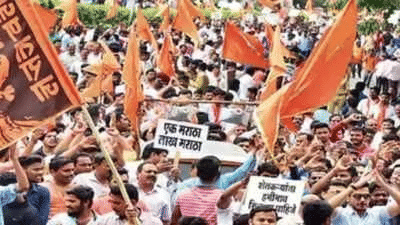 Why in News?
Why in News?
- Students in Maharashtra who were admitted under the Socially and Economically Backward Classes (SEBC) quota for the academic session of 2024-25 have been granted a three-month extension to submit their Caste Validation Certificates (CVCs). Initially, a six-month extension was made available in June 2024, and the new deadline is now set for April 2025. This extension also applies to students applying under the Other Backward Classes (OBC) quota. The government has emphasized that this will be the final extension, and failure to submit the CVC by the deadline may lead to loss of admission.
Key Takeaways
- The new deadline for Caste Validation Certificate submissions is April 2025.
- This extension applies to both SEBC and OBC quota admissions.
- Failure to meet the deadline may jeopardize students' admissions.
Additional Details
- SEBC Quota: This quota was established under the Maharashtra State Reservation for Socially and Educationally Backward Classes Act, 2024, providing a 10% reservation in public jobs and higher education for the Maratha community, which represents nearly one-third of Maharashtra's population.
- Background of the SEBC Act: The demand for reservation was recognized by the Maharashtra government in January 2024, leading to the enactment of the SEBC Act in February 2024, aimed at mitigating educational and economic disparities faced by the Maratha community.
- Caste Validation Certificate (CVC) Process: A Caste Certificate verifies community affiliation, while a Caste Validity Certificate confirms the authenticity of this document. CVCs are essential for individuals from reserved categories applying for government jobs or professional courses. Applicants can obtain CVCs online or offline by submitting necessary documents that validate their identity, residency, and caste.
- Reasons for Extension: The deadline extension is attributed to procedural difficulties in obtaining CVCs due to the recent implementation of the SEBC quota. Many individuals faced challenges in gathering required documentation, and administrative systems are adapting to the surge in applications.
- Legal Challenges: The SEBC Act has faced legal challenges in the Bombay High Court, with a ruling on April 16, 2024, suggesting that admissions under this Act are subject to further judicial orders, complicating the submission process for CVCs.
This extension allows students more time to secure necessary documentation, ensuring that they can meet admission requirements without facing unnecessary barriers. The situation remains fluid due to ongoing legal scrutiny and administrative adjustments.
Withdrawal of Track and Trace System for Pharmaceuticals
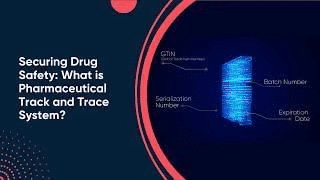 Why in News?
Why in News?
- The Commerce Ministry has made the significant decision to withdraw the track and trace system for pharmaceutical exports, effective February 1, 2025. This move is in accordance with the regulatory framework established by the Ministry of Health and Family Welfare, which introduced barcode requirements for drug brands starting in August 2023. The aim is to facilitate the ease of doing business for exporters while ensuring compliance with international serialization standards without imposing additional domestic regulations.
Key Takeaways
- The track and trace system was first introduced on January 10, 2011.
- While secondary and tertiary packaging barcoding was implemented in 2011 and 2013, primary-level barcoding faced numerous operational challenges.
- The last extension for the primary barcoding requirement was set until February 1, 2025.
Additional Details
- Benefits of the Track and Trace System: This system was designed to prevent counterfeit drugs from entering the supply chain and to enhance efficiency in drug production and sales. It also aimed to address challenges related to product recalls.
- Challenges in Implementation: Despite its potential benefits, the system faced significant challenges, including a lack of common industry standards, security concerns regarding barcode alteration, and criticisms from some pharmaceutical companies regarding increased production costs and delays.
- Recent Developments: The Directorate General of Foreign Trade (DGFT) has officially announced the withdrawal of the track and trace provisions under the Foreign Trade Policy. The Health Ministry will now manage the authentication system for exported drug formulations in accordance with the Drug Rules of 1945.
- Importance of the Change: This change aligns with the serialization requirements of most export destinations, ensuring product traceability while simplifying regulatory compliance for exporters. The DGFT noted that this step significantly enhances the ease of doing business for pharmaceutical exporters.
In summary, the withdrawal of the track and trace system for pharmaceuticals marks a pivotal shift in regulatory practices, aiming to streamline operations while maintaining compliance with international standards. This adjustment reflects ongoing efforts to enhance the pharmaceutical export sector's efficiency and effectiveness.
Indian Navy’s Transition to Rafale-M Fighter Jets
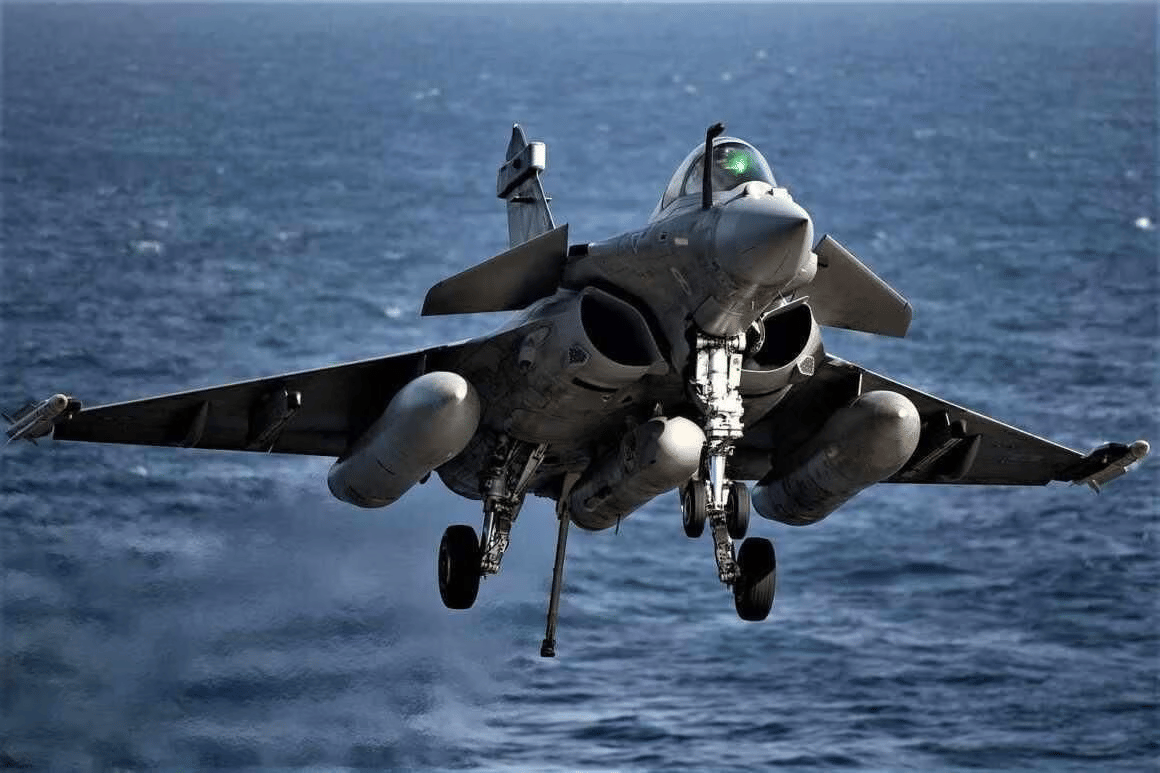 Why in News?
Why in News?
- The Indian Navy has recently opted to enhance its carrier-based air power by selecting the Dassault Rafale M fighter jet. This decision follows a thorough evaluation process that compared the Rafale-M with Boeing’s F/A-18E/F Super Hornet. This strategic choice signifies India's commitment to modernizing its naval aviation capabilities with a focus on advanced technology and operational efficiency.
Key Takeaways
- The Rafale-M is specifically designed for operations on aircraft carriers.
- The MiG-29K, which has been in service since 2010, has faced reliability issues despite its agility.
- The procurement process in India is complex, leading to potential delays.
- Financial constraints and a shift in defense partnerships affect procurement strategies.
- The Rafale-M acquisition is a temporary solution until the development of the Twin Engine Deck-Based Fighter (TEDBF) is completed by 2031.
Additional Details
- Background of the MiG-29K: This Russian-designed jet has been pivotal for the Indian Navy since its introduction, serving aboard INS Vikramaditya and INS Vikrant. While it excels in air-to-air and air-to-surface missions, it has encountered maintenance challenges and several accidents, raising concerns about its operational reliability.
- Selection of Rafale-M: The Rafale-M was chosen for its advanced systems, including a fixed delta wing design and enhanced landing gear, which improve performance aboard Indian carriers. Its capability to operate effectively in diverse conditions aligns with the Indian Navy's strategic requirements.
- Defence Procurement Process in India: The procurement process is characterized by multiple layers of approval, which, while designed for transparency, often results in inefficiencies and delays. The lack of centralized decision-making further complicates the acquisition of essential military equipment.
- Financial Constraints: India's defense budget, relative to its GDP, poses financial challenges in procurement. The ongoing transition from reliance on Russian military hardware to a wider range of suppliers complicates negotiations and technology transfers.
- Future of Naval Aviation: The Rafale-M will serve as a stopgap until the TEDBF is developed, with expected operational adjustments required for training and logistics. Although the MiG-29K possesses valuable operational experience, the advanced capabilities of the Rafale-M promise to enhance the overall effectiveness of naval operations.
In conclusion, the Indian Navy's transition to the Rafale-M fighter jet marks a significant step towards enhancing its carrier-based air power, reflecting a strategic commitment to modernize its fleet and operational capabilities while navigating the challenges of procurement and budget constraints.
Socioeconomic Status and Genetic Susceptibility to Obesity
 Why in News?
Why in News?
- Recent studies have highlighted the intricate connection between genetic predispositions and socioeconomic factors in the context of childhood obesity. A significant research project involving 6,400 schoolchildren in India has shown that socioeconomic status can affect an individual's genetic vulnerability to obesity. Conducted by the School of Biotechnology at Jawaharlal Nehru University, this research represents a vital advancement in understanding childhood obesity, particularly among non-Caucasian demographics.
Key Takeaways
- The study utilized a two-staged Genome-wide Association Study (GWAS) and an Exome-wide Association Study (ExWAS).
- Obesity-related genetic variants were identified, revealing insights into how socioeconomic factors modify genetic predispositions.
- Children from higher socioeconomic backgrounds displayed increased obesity rates despite similar genetic risks.
Additional Details
- Study Design: The research was split into two parts: the GWAS, which encompassed 5,673 children, and the ExWAS, involving 4,963 children. The GWAS phase included both discovery and replication stages to validate genetic associations related to obesity.
- Genetic Variants: The study identified two established obesity-related genes and six novel genetic associations. Noteworthy genes included TCF7L2, which plays a role in obesity-related tissue enhancement, and CDC5L, which is involved in adipose tissue metabolism.
- The ExWAS uncovered four novel missense variants associated with body mass index (BMI) and waist-to-hip ratio.
Understanding the interplay between genetics and socioeconomic factors is essential for developing effective public health strategies to combat childhood obesity. The insights from this study can guide tailored interventions that consider both genetic vulnerabilities and socioeconomic influences, ultimately aiding in addressing this growing public health challenge.
13th Edition of Ekuverin Military Exercise
 Why in News?
Why in News?
- The 13th edition of the Ekuverin military exercise has recently commenced, involving collaboration between the Indian Army and the Maldives National Defence Force. This exercise is significant for enhancing interoperability between the two forces and strengthening bilateral relations.
Key Takeaways
- The term "Ekuverin" translates to "friends" in the Dhivehi language.
- Ekuverin began in 2009 and is conducted alternately in India and the Maldives.
- The exercise aims to improve tactical skills and counter-terrorism capabilities.
- It includes training for humanitarian assistance and disaster relief (HADR).
Additional Details
- Objectives of the Exercise: The primary focus is on enhancing interoperability and tactical proficiency, especially in counter-terrorism and counter-insurgency operations.
- Structure and Conduct: The exercise involves a platoon-strength contingent from both nations, spanning 14 days, and includes practical drills, tactical exercises, and staff talks to improve coordination.
- Significance: Ekuverin enhances military capabilities, builds trust, and addresses regional security concerns such as terrorism and piracy.
- Humanitarian Assistance and Disaster Relief: A vital part of the exercise, troops rehearse disaster response, including medical aid and evacuation procedures, emphasizing the commitment of both nations to regional stability.
- Cultural Exchange: The exercise fosters cultural exchange among troops, which is essential for building camaraderie and cooperation, crucial for effective collaboration during joint operations.
In conclusion, the Ekuverin military exercise serves as a pivotal platform for enhancing military cooperation between India and the Maldives, addressing mutual security challenges, and fostering a strong friendship that extends beyond military collaboration.
OPEC+ Maintains Oil Output Policy Amid Global Tensions
 Why in News?
Why in News?
- The Organization of the Petroleum Exporting Countries Plus (OPEC+) has reaffirmed its commitment to gradually increase oil production starting in April 2025. This decision occurs against a backdrop of ongoing geopolitical tensions and fluctuating oil prices, which have prompted the group to change the firms it relies on for monitoring production metrics.
Key Takeaways
- OPEC+ will unwind a previous cut of 2.2 million barrels per day (bpd) starting in April 2025.
- The initial increase will amount to 138,000 bpd monthly.
- The group has replaced the U.S. Energy Information Administration (EIA) with new monitoring firms.
Additional Details
- About OPEC+: OPEC+ comprises 22 oil-exporting nations, including the original 12 OPEC members and several non-OPEC countries. Its main goal is to regulate oil production to promote market stability.
- Geopolitical Context: Recent decisions are influenced by U.S. sanctions on Russian oil supplies and political pressures from former President Donald Trump, who has previously urged OPEC to raise production to lower oil prices.
- Current Market Dynamics: Oil prices reached $83 per barrel in January 2025 but have since fallen below $77 due to market volatility and supply concerns related to tariffs imposed by the U.S. on key trading partners.
- OPEC's Historical Context: Established in 1960 by five founding members, OPEC has expanded over the years and is headquartered in Vienna, Austria. Its purpose is to coordinate policies among oil-exporting nations for fair pricing and stable supply.
- About Brent Oil: Brent oil serves as a benchmark for global oil prices. Characterized as light, sweet crude oil from North Sea fields, it is easier to refine into products like gasoline due to its low density and sulfur content.
In summary, OPEC+ is poised to increase oil production amidst global tensions and market fluctuations, signaling a strategic response to both internal and external pressures. The group's decision to replace the EIA with new firms for monitoring production highlights its focus on improving the accuracy of its assessments.
China’s Counter Tariffs Against the US
 Why in News?
Why in News?
- On February 4, 2025, the Chinese government announced a series of new counter tariffs targeting the United States. This response comes in light of recent tariff increases imposed by the U.S., which China has condemned as a breach of World Trade Organization (WTO) regulations, claiming these actions disrupt established trade relations.
Key Takeaways
- China has implemented a 15% tariff on coal and liquefied natural gas.
- A 10% tariff has been placed on crude oil, agricultural machinery, and large-displacement vehicles.
- The current trade tensions echo historical conflicts, particularly the trade war initiated during President Trump's administration.
- China has also launched an antitrust investigation into Google, reflecting increased scrutiny of U.S. tech firms in China.
- Market reactions were initially subdued, with analysts deeming China’s response as "measured and appropriate."
Additional Details
- US-China Trade War: The trade war intensified following the U.S. government's imposition of tariffs to penalize China for issues related to illegal drug and migrant flows.
- Strategic Implications: China’s targeted tariffs aim to strategically affect U.S. sectors that are heavily reliant on the Chinese market, such as energy and technology.
- Global Economic Context: The ongoing conflict between the two largest economies may introduce broader uncertainties in global trade dynamics, impacting various sectors worldwide.
The recent developments in U.S.-China trade relations highlight the delicate balance both nations must maintain as they navigate their economic interests while avoiding further escalation of tensions.
Antarctic Research Expedition in the Ross Sea
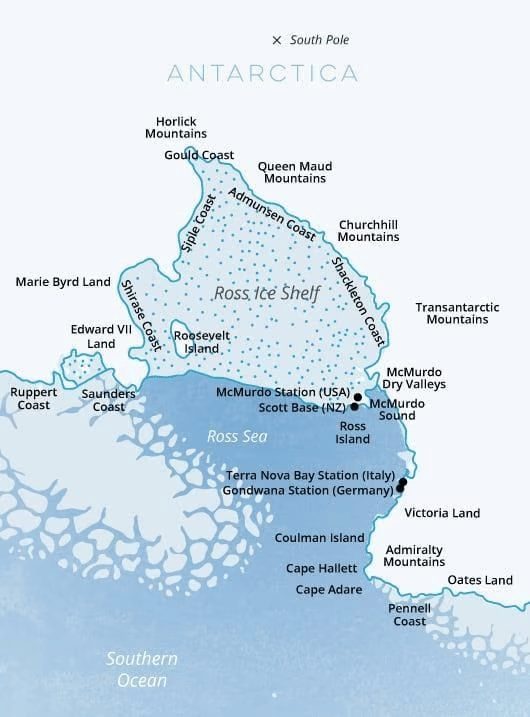 Why in News?
Why in News?
- The Ross Sea has emerged as a critical area for international marine research, particularly due to its ecological importance and the urgent need for conservation. Recent expeditions, including the current one led by marine scientist Sherine Sonia Cubelio, are focused on understanding the biodiversity within this unique marine environment. This 40-day collaborative expedition involves scientists from various countries, including India, who are studying living resources in the region.
Key Takeaways
- The Ross Sea is situated in the Southern Ocean and spans approximately 1.55 million square kilometers.
- This sea is notable for its ecological diversity, housing the largest colony of emperor penguins worldwide.
- It has been designated as a marine protected area to preserve its unique ecosystems.
- The region serves as a natural laboratory for climate change research, providing insights into global climate systems.
Additional Details
- Geographic Overview: The Ross Sea is bordered by Cape Adare and Cape Colbeck, featuring both shallow and deep marine regions, with most of the seafloor being less than 900 meters deep. Its relatively ice-free conditions facilitate research vessel access.
- Biodiversity and Marine Protected Areas: The area is home to a wide variety of marine life and has been designated as a marine protected zone, which prohibits fishing activities to safeguard its ecosystems. Researchers utilize environmental DNA methods to study zooplankton and fish distribution, essential for evaluating marine ecosystem health.
- Climate Change Effects: The Ross Sea plays a significant role in sea ice production, affecting ocean currents and heat distribution globally. It is crucial for predicting future climate scenarios.
- Historical Exploration: The Ross Sea has a rich exploration history, first traversed by the HMS Erebus and HMS Terror in 1841. Ongoing geological studies contribute to understanding Antarctica's ecology and geology.
- Conservation Efforts: The Commission for the Conservation of Antarctic Marine Living Resources (CCAMLR), established in 1980, oversees the conservation initiatives in this region, focusing on maintaining marine life and environmental integrity. The Ecosystem Monitoring Program (CEMP) complements these efforts.
In summary, the Ross Sea is an essential area for marine research and conservation, with ongoing studies highlighting its biodiversity and the impact of climate change. The collaborative efforts of international scientists aim to not only protect this unique environment but also to gain insights that can inform global ecological strategies.
Kerala Health System Improvement Programme
 Why in News?
Why in News?
- The Kerala government has recently sanctioned the Kerala Health System Improvement Programme, backed by a substantial loan of Rs 2,424.28 crore from the World Bank. This initiative aims to uplift the healthcare standards across the state, addressing critical issues such as non-communicable diseases, emergency services, and elder care, with a particular focus on the welfare of impoverished communities.
Key Takeaways
- The primary goal is to enhance life expectancy and overall quality of life in Kerala.
- The programme aims to establish a resilient healthcare system capable of addressing various health challenges.
- It emphasizes the prevention of avoidable diseases, accidents, and premature deaths.
- Special attention is given to the needs of underprivileged populations.
Additional Details
- Key Components: The programme includes initiatives to develop a comprehensive ecosystem for combating infectious diseases and strengthening healthcare infrastructure. It also aims to address health risks associated with climate change and improve emergency and trauma care services through a 24/7 emergency response network.
- Coordination Among Departments: Effective collaboration among various state departments is essential for a robust response to emerging health threats. Local self-government institutions will be involved to enhance healthcare delivery and tackle existing and upcoming challenges.
- Focus on Non-Communicable Diseases: Strategies will be developed for the prevention and management of non-communicable diseases, alongside increased public health funding and improved resource allocation. The universalization of digital health applications is also aimed at enhancing healthcare accessibility.
- Emergency and Trauma Care Enhancements: The programme will establish a network of ambulances and a trauma registry to ensure timely medical responses to trauma cases, emphasizing a system that operates around the clock.
- Support for Elderly Care: Provisions will be made for elderly care, with local self-government institutions playing a crucial role in addressing the unique healthcare needs of the elderly population, alongside efforts to improve healthcare human resource capabilities.
In conclusion, while the Kerala Health System Improvement Programme faces challenges such as emerging health issues and inadequate public health investments, it builds upon existing initiatives like Aardram Mission and Karunya Arogya Suraksha Padhati. The programme underscores the necessity for a new service delivery model for effective management of these challenges, ultimately aiming to enhance the health and well-being of the state's population.
Extremely Large Telescope Threatened by Energy Project in Chile
 Why in News?
Why in News?
- The Atacama Desert in northern Chile is recognized for its unparalleled astronomical observation conditions, characterized by clear, dark skies. However, the proposed INNA Project, a green energy megaproject backed by AES Andes, threatens to disrupt this pristine environment. This initiative focuses on creating a vast energy infrastructure for hydrogen and green ammonia production, and its proximity to the Paranal Observatory, which houses the European Southern Observatory’s Extremely Large Telescope (ELT), raises concerns about the future of astronomical research in the region.
Key Takeaways
- The Atacama Desert is one of the world's premier locations for astronomical studies due to its high altitude and minimal light pollution.
- The Extremely Large Telescope (ELT), a $1.5 billion project, aims to enhance our understanding of the universe.
- The INNA Project, with a budget of $10 billion, poses risks to the observatory’s operations due to its proximity.
Additional Details
- Importance of the Atacama Desert: This region is vital for ground-based astronomy, currently contributing to nearly 40% of worldwide astronomical observations, with expectations to increase to 60% within a decade.
- The Extremely Large Telescope (ELT): Under construction for $1.5 billion, the ELT will feature a primary mirror nearly 40 meters in diameter, revolutionizing our understanding of dark energy and exoplanet imaging.
- INNA Project Risks: The Integrated Energy Infrastructure Project for Hydrogen and Green Ammonia aims to use over 3,000 hectares of land, with parts as close as five kilometers to the Paranal Observatory, potentially causing detrimental effects such as increased dust and light pollution.
The future of ground-based astronomy is at stake, with the ELT and other advanced telescopes poised to unlock new discoveries about the universe. However, any disruption from the INNA project could severely limit access to key research areas and hinder significant scientific advancements.
Russia’s Iskander-1000 Missile
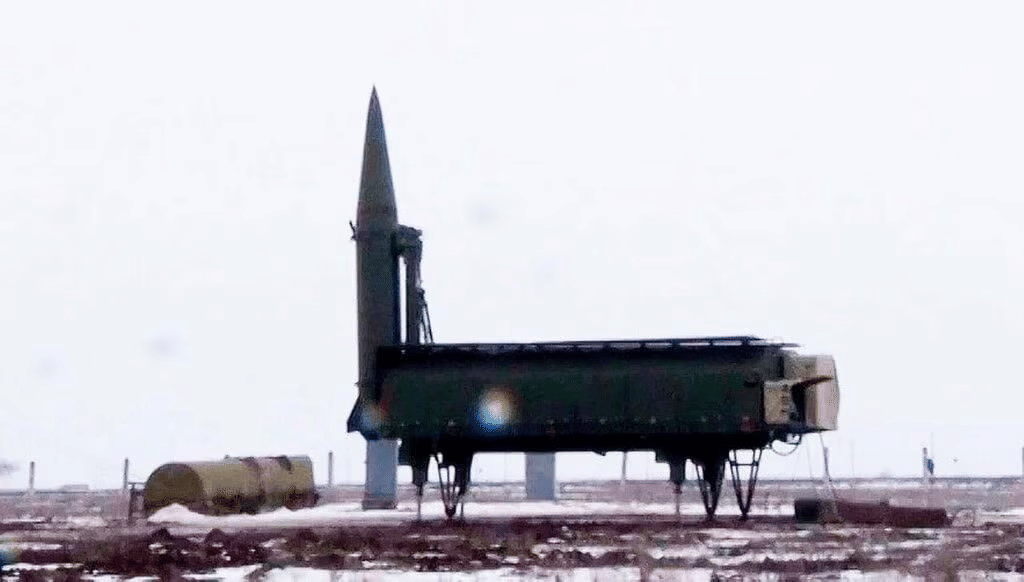 Why in News?
Why in News?
- The Iskander-1000 missile, a significant development by Russia, showcases advancements in tactical ballistic missile technology. Following the collapse of the Intermediate-Range Nuclear Forces (INF) Treaty, Russia has intensified its missile production efforts, with the Iskander-1000 designed to enhance its strike capabilities, particularly in Western Ukraine.
Key Takeaways
- The Iskander-1000 missile has a reported range of 1,000 kilometres, effectively doubling the reach of its predecessor.
- This missile aims to target NATO assets and critical infrastructure within Ukraine.
- Russia is also planning to deploy the Oreshnik missile system in Belarus, further increasing its military capabilities in Eastern Europe.
Additional Details
- Background of the Iskander Missile System: The Iskander missile system, known as 9K720, has been vital to Russia's tactical arsenal. Initially limited to a range of 500 kilometres due to the INF Treaty, the system's advancements became possible after the U.S. withdrawal from the treaty in 2019.
- Development of the Iskander-1000: Developed by the Machine-Building Design Bureau, the Iskander-1000 features a larger propellant casing and a shorter warhead, enhancing its range while preserving its destructive capacity.
- Technical Specifications: The Iskander-1000 is expected to incorporate advanced technologies such as jam-resistant satellite navigation and terminal guidance systems, with a warhead weight between 710-800 kg, similar to the Iskander-M, ensuring effective strikes on high-value targets.
- Strategic Implications: The missile's introduction allows Russia to target deeper into Ukrainian territory, threatening command centers and supply depots that were previously out of reach, potentially shifting the regional power balance.
- Response from Ukraine and NATO: Ukraine has dismissed reports about the Iskander-1000 as disinformation, while NATO allies remain concerned about its implications for regional security.
The emergence of the Iskander-1000 missile signifies a notable shift in the military dynamics of Eastern Europe, as Russia enhances its capabilities in a post-INF Treaty landscape, raising concerns among neighboring nations and NATO regarding security and stability in the region.
ISRO Unveils Finite Element Analysis Software FEAST

Why in News?
- The Indian Space Research Organisation (ISRO) recently launched the latest version of its Finite Element Analysis of Structures (FEAST) software at IIT Hyderabad. This significant event, held during the 8th National Finite Element Developers’ Meeting, brought together over 250 experts from academia and industry to discuss advancements in finite element analysis.
Key Takeaways
- ISRO Chairman V. Narayanan highlighted the importance of FEAST in structural design for future projects.
- FEAST plays a crucial role in ISRO’s Gaganyaan Human Spaceflight Mission and the Bharatiya Antariksh Station.
Additional Details
- What is FEAST? FEAST is an indigenous finite element analysis software developed by ISRO’s Vikram Sarabhai Space Centre (VSSC). It is designed to predict how structures respond to various forces, including stress and temperature changes. This software offers a cost-effective alternative to foreign software, making it particularly beneficial for students and researchers in India.
- Applications of FEAST: It is essential for major ISRO projects such as the Gaganyaan mission, which is India’s first manned space mission, and the design of the Bharatiya Antariksh Station and the Next Generation Launch Vehicle. These applications demonstrate FEAST’s role in enhancing India’s space exploration capabilities.
- Accessibility of FEAST: ISRO has issued over 4,000 licenses for FEAST to various institutions and industries. The software is available in three versions: Academic for students, Premium for small and medium industries, and Professional for larger organizations. A free trial version is also accessible on the official ISRO website, promoting wider usage.
- Educational Initiatives: To facilitate user education, ISRO has published a book titled "Introduction to Finite Element Analysis," aimed at undergraduate engineering students and practicing engineers. This resource includes step-by-step tutorials and solved examples to aid in learning and applying Finite Element Analysis.
- Future Developments: ISRO is also in the process of developing Pravaha, a computational fluid dynamics software, further enhancing its simulation capabilities and promoting self-reliance in engineering software development.
In conclusion, the launch of FEAST marks a significant advancement in India's engineering capabilities, particularly in the space sector. Its accessibility and educational resources will empower students and professionals alike, contributing to the future of India's space exploration endeavors.
|
164 videos|800 docs|1156 tests
|
FAQs on Weekly Current Affairs (1st to 7th February 2025) - General Test Preparation for CUET UG - CUET Commerce
| 1. What is the Maharashtra SEBC Quota Caste Validation Certificate, and why is it important? |  |
| 2. How can individuals apply for an extension of the Maharashtra SEBC Quota Caste Validation Certificate? |  |
| 3. What are the implications of the withdrawal of the Track and Trace System for Pharmaceuticals in India? |  |
| 4. What are the key features of the Indian Navy’s transition to Rafale-M Fighter Jets? |  |
| 5. How does socioeconomic status influence genetic susceptibility to obesity? |  |
















